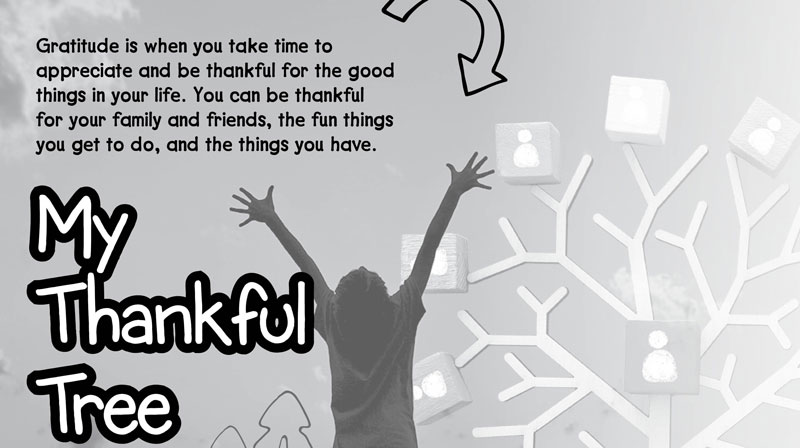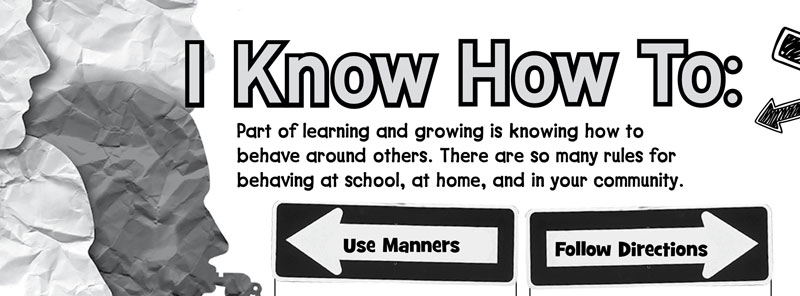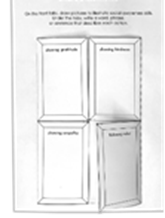Social Awareness

Find this activity in the student portfolio
Objective: Students will be able to demonstrate empathy and compassion for others.
Estimated Duration: 20 minutes
Description: Empathy is the ability to put yourself in the shoes of someone else and understand what they are feeling or experiencing.
Building an understanding of what others are feeling and why someone might be experiencing feelings at a particular time is an important life skill for students to develop.
It is important for students to learn empathy because it helps them to understand how others feel, so they can respond appropriately to a situation. It also helps them build a sense of security and stronger relationships with other children and teachers. Empathy encourages tolerance and acceptance of others, which will help build a more harmonious class environment.
This activity will help students place themselves in someone else's shoes.
They are asked to think about a time that something difficult happened to a friend or family member. It might be helpful to offer some examples for students, such as someone got sick, someone lost something that was special to them, or someone lost an important game.
Next, students are asked to draw or write what they would say to their friend or family member to make them feel better.
Finally, they are asked to draw or write how they would feel it the same thing happened to them.
Teachable Moments: There are many ways you can help students build empathy and compassion for others:
- Model kindness and empathy to your students.
- Let your students know they are not alone and listen closely to them.
- Encourage empathy in your students and don’t force apologies; let them come at their own accord.
- Help your students name their feelings, as understanding their own feelings is an important step in understanding the feelings of others.
- Talk to your students about how other people may be feeling and why. This will help them build an emotional language and think about other people’s perspectives.

Find this activity in the student portfolio
Objective: Students will understand and express gratitude.
Estimated Duration: 20-25 minutes
Description: Gratitude is an important skill for students to understand. Gratitude is focusing on what is good in your life and being thankful for the things that you have.
Focusing on the positive things in your life can help you build a stronger sense of self. For students, this translates into wanting to be successful both in and out of the classroom. Students who are grateful tend to be happier, more optimistic, and have better social supports. They also tend to give more social support to others as well.
This activity will help students identify and show the things that they are grateful for in their lives. Students will create a collage of pictures of different things they are thankful for. Students could draw pictures if they have a hard time finding images to cut out.
Teachable Moments: There are many ways you can help students to understand and express gratitude:
- Lead by example; show students how you express your gratitude to others with your actions and words.
- Practice mindful breathing together, ideally first thing in the morning. Have students take a moment to notice and give thanks their life-sustaining breath.
- Discuss the origin of the food that we eat every day or other things that we use in our everyday lives, such as a desk, a crayon, or scissors. Ask them to think what things or people they think were involved in bringing that food or object into their hands. Reflecting on ways we are all supported and sustained by other things and people can cultivate an appreciation for their things and the people around them.
- Choose a time to express gratefulness together as a class. You might have the class write letters of thanks to another class or visitor you might have had.

Find this activity in the student portfolio
Objective: Students will be able to understand the importance of accepting and respecting others' differences.
Estimated Duration: 20 minutes
Description: Building positive identities and a respect for differences is a positive first step in helping children accept, understand, and value the world around them.
To do so, it is important for students to see both similarities and differences. Students need to know that differences are not bad; they should be embraced because they are what make us unique. Acknowledging both similarities and differences allows students to learn from others who are different from them.
This activity will allow students to work with another child in the classroom to learn more about one another. They will find similarities and differences between one another and list what they appreciate about who they are.
Teachable Moments: There are many ways you can help students to celebrate and accept differences:
- Celebrate similarities and differences with artwork and charts. Display the charts and artwork on bulletin boards and around the classroom. Emphasize how proud you are to have so many unique students in your class.
- Challenge the idea of “normal.” It’s helpful to challenge the idea of “normal” to see past our differences. Remind students that all of us are born unique with different likes, abilities, looks, personalities, preferences, etc., so there is no one way to be “normal.”
- Choose classroom themes that celebrate diversity.
- Review the materials you use to teach. Do they include diverse individuals? Do they challenge harmful stereotypes?
- Consider students' cultures and language skills when developing learning objectives and instructional activities.

Find this activity in the student portfolio
Objective: Students will be able to understand social norms for school, home, and their community.
Estimated Duration: 20 minutes
Description: Social norms are the unwritten rules or behaviors that are considered acceptable in a particular social group or culture.
Examples include holding a door open for the person behind you or putting your trash in the garbage instead of throwing it on the ground. Social norms give us an expectation for how to behave in certain situations.
It is important to help students understand that rules for behaving in their community, at home, and in school will help them to stay safe and be healthy. It also shows others they know how to be respectful to people and property. When people respect one another, it shows they care.
This activity will allow students to record rules they follow at home, at school, and in their community that help to keep them safe and healthy.
Teachable Moments: There are many ways you can help students to learn how to behave in different situations:
- Have students help create classroom rules and consequences. Post them as a visual reminder.
- Be sure that you are following the rules too! If a rule only applies to students, state that clearly.
- Be flexible. Following the rules should be consistent, but there will be times in your classroom that you will need to make exceptions. Acknowledging that and discussing it with students allows them to see the importance of flexibility when it comes to rules.
- Play games that help teach children listening and following directions. Set rules for the games that are easy to follow, but have clear consequences (e.g., Simon Says).
- Read books that have lessons about characters who follow the rules and characters who do not.
Foldable®: Shared Moments
Estimated Duration: 25-30 minutes

- Cut along the outside solid black lines of the large Social Awareness Foldable. DO NOT cut the middle black cut-lines at this time.
- Fold along the two long dotted lines in the middle of the Foldable. Always fold so the dots are visible along the fold line. Students might help each other fold. Glue the back of the folded Shutter Foldable onto the large gray rectangle in the student book.
- NOW cut along the middle two solid black lines on each side of the shutterfold to form four tabs.
- On the front of the tabs, have students draw pictures that show them showing gratitude, showing kindness, showing empathy, and following the rules. Students write words, phrases, or simple sentences under the tabs.
- Cut out the Pocket and the Wheel by cutting along the solid black lines.
- Glue the bottom and right edge of the pocket onto the labeled, gray strips in the student booklet. (Note that unlike anchor tabs, pockets have NO folds.)
- Allow glue to dry a minute before placing the Wheel in the pocket. Read the information on the front of the pocket. Tell students that they will be evaluating their own social awareness actions. Read the questions to the students and have them rate themselves: one star for sometimes, two stars for often, and three stars for always. For those who want to, allow students to share their thoughts and responses. Tell students to visit this page when needed to self-evaluate their social-awareness skills by responding to the four questions on the pocket. What changes do they notice?
Go to other SEL competencies in this book (Primary - Grades 1–2):

The teaching suggestions only work in accompaniment with the student portfolio, which has all the activity pages.
The teaching suggestions here are also available within a PDF of the entire teacher's manual.